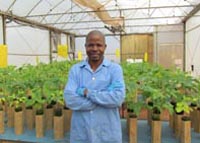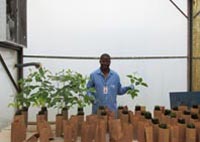From January 2014, the University of Zimbabwe, Crop Science Department, assumed coordination of the project, taking over from CIAT. There has been a seamless changeover, with support from both Judith de Wolf, the previous N2Africa coordinator for Zimbabwe, and Dr Nelson Mango, the CIAT Country Representative in Zimbabwe. During early April, both Judith and Nelson visited the University for an official handover of the project, including two project vehicles (see photos).


